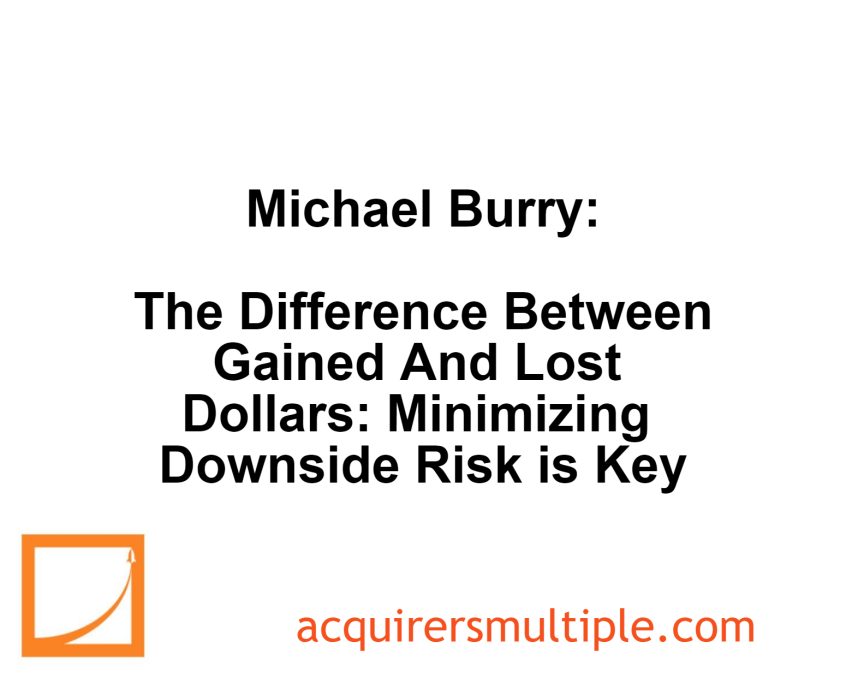In his 2000 Scion Capital Letter, Michael Burry discussed the difference between gained and lost dollars, and the importance of minimising downside risk. Here’s an excerpt from the letter:
During this time, the Fund was comfortably positive. The main accomplishment of the Fund, in my opinion, was not grossing 8.24% in two months but rather avoiding such debilitating devaluations as affected the indices and many widely held stocks during that month.
While I cannot proclaim that my stock-picking ability is responsible for the gain — the size and most probably the direction of that gain is almost surely a random short-term fluctuation in our favor — I can with some confidence assert that my strategy is entirely designed to avoid and otherwise minimize the price risk in individual securities.
As a result, I would argue that it is the lack of a loss in a month like November that represents the most reproducible and the most potent characteristic of the Fund. It is a tenet of my investment style that, on the subject of common stock investment, maximizing the upside means first and foremost minimizing the downside. The deleterious effect of permanent capital loss on portfolio returns cannot be overstated.
Some basic math elucidates this point. When planning for a double, every dollar in excess cost amounts to two dollars in excess gain required. Every dollar saved amounts to the same two dollars in excess gain already realized.
And it goes without saying that a 33.3% loss requires a 50% gain just to attain breakeven. On the flip side, 33.3% saved on the buy price makes a 50% gain back to the price of first consideration. On a percentage basis — and it is on this basis that we must evaluate each and every decision — lost dollars arc simply harder to replace than gained dollars are to lose.
This focus on a margin of safety in each and every investment is what should make the Fund special. But for the unwieldy nature of such a term, “fund of well conceived investments” might make an apt handle. Whether or not the Fund ought to be called a hedge fund is an individual decision grounded only in semantics.
You can read the entire letter here:
Michael Burry – 2000 Scion Capital Letter
For all the latest news and podcasts, join our free newsletter here.
Don’t forget to check out our FREE Large Cap 1000 – Stock Screener, here at The Acquirer’s Multiple:



